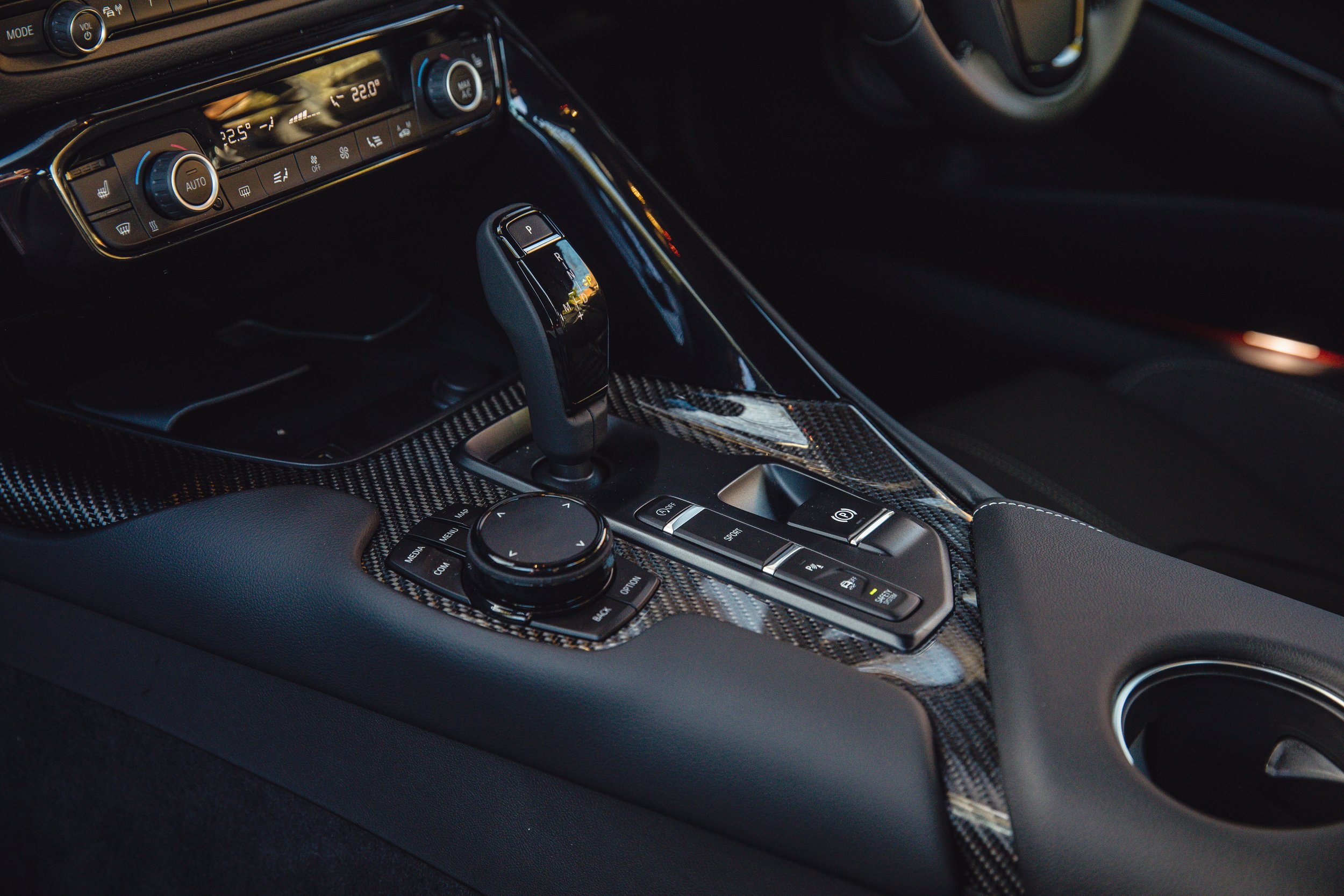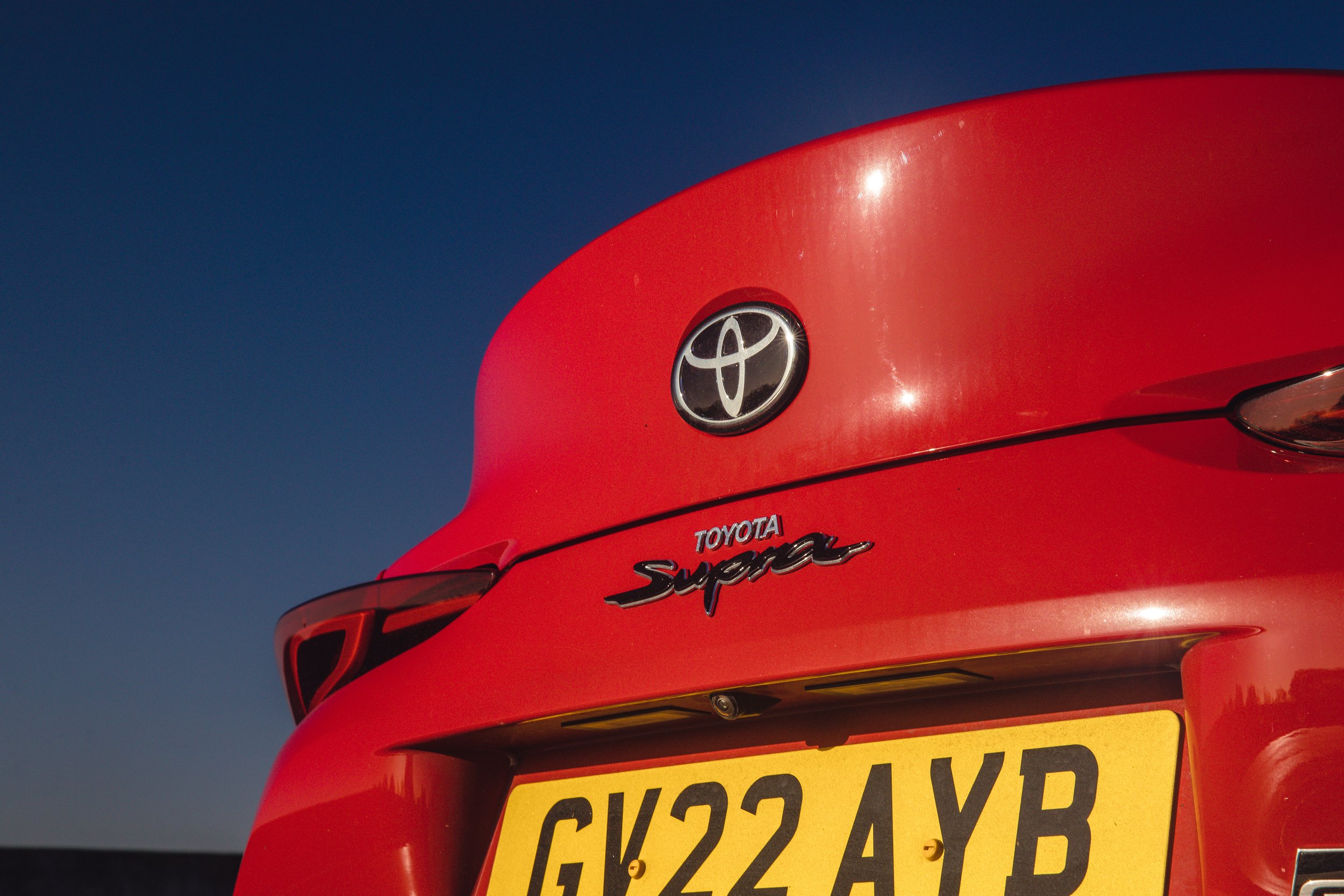
Road Test: Toyota GR Supra
Is the reintroduction of the Supra name nothing more than good marketing, or has Toyota built a proper JDM legend?
WORDS: Mark Rose | PHOTOS: Dom Ginn
The sports car market ain’t what it used to be. Admittedly, there are plenty of options for people to choose from such as the Porsche Cayman, Lotus Emira, Alpine A110, and BMW Z4. But with Nissan’s refusal to bring the new Z to the UK, Audi killing off the TT, and the Mercedes-Benz SLC resigned to the history books, the future is looking grim for the two-seat sportscar. The problem is lack of demand. You can now buy a go-faster version of nearly anything and the vast majority of these cars offer more practicality than a small coupé.
This brings us neatly to Toyota who had to find a way of justifying a new GR Supra to the board without busting the bank. The allure of the Supra badge may be strong, but if it doesn’t make financial sense then it won’t get the go ahead, and so the best way to cut costs is to collaborate with another manufacturer. It turns out that Toyota has form when it comes to platform sharing, just look at what they did with the GT86 which was fundamentally identical to the Subaru BRZ. Despite the similarities, Toyota sold them by the bucket load, but with a name as legendary as Supra, there’s only so much parts sharing you can get away with. And then there’s the matter of who to work with.
The Supra is synonymous with the straight-six engine which meant Toyota instinctively looked to BMW for a powertrain. Building their own six-cylinder wasn’t on the cards because it would have meant spending untold sums of money on R&D and an all-new factory just to manufacturer it, with no guarantee that the demand for the car would cover the costs. The timing was also fortuitous in that Munich had to find a way of justifying a new Z4, and so, a partnership between BMW and Toyota was spawned which saw them co-develop a platform for the Z4 and GR Supra. When it came to the design, chassis development, tuning and calibration, both manufacturers went their separate ways resulting in two cars that look different to the naked eye, but are very similar once you peel back the layers.


When it comes to the execution, you realise that Toyota has borrowed more from BMW than the other way round, particularly in the cabin. It’s beautifully built with quality materials, but much of the interior furnishing is BMW’s and the iDrive system seems to have only had a light re-skin. The beeps and bongs are undeniably German, and the driving position also feels very BMW. However, what the Supra interior lacks in originality it makes up for with quality and trusty ergonomics. It doesn’t benefit from the newest switchgear Munich has at its disposal, but it’s undoubtedly a step up from what Toyota can offer.
Press the start button and the familiar B58 engine fires in to life, you pull that ubiquitous ZF gearbox in to drive, and you set off. Your first impressions are all BMW. I’ve not driven the latest Z4 but I’m reliably told that it feels like a different beast to the Supra. However, that information does little to smooth over the fact that despite the recalibrations; the engine, gearbox, and vehicle dynamics feel less ‘land of the rising sun’ and more frankfurters and wheat beer. Similarities aside, one thing that can’t be denied is the brilliance of the GR Supra. It’s by no means the most engaging sportscar on sale, but what it lacks in outright feel factor compared to a Cayman or an A110, it wins back in refinement and usability.


The turbocharged 3.0 litre six-cylinder engine is silky smooth and sounds expensive. It serves up 335bhp and 369lb ft. along with a 0-62mph time of 4.6 seconds and a top speed of 155mph. The straight line performance is brisk with a strong mid-range, although there isn’t much love in taking it to the 6,500rpm rev limiter. It feels as fast as the performance figures suggest with decent throttle response when in sport mode. The eight-speed ZF gearbox which is famed for its refinement feels as though it’s received some fettling from Toyota because the shift speeds feel a touch sharper than usual, particularly when you take control manually using the paddles. Driving enthusiasts can also rejoice because as of late 2022, you can spec a manual gearbox which will undoubtedly bring an extra layer of engagement to the package.
On a twisty piece of road, the GR Supra is fun and surefooted, providing its dry. Front-engined, rear-wheel drive sports cars have a habit of offering up feisty vehicle dynamics, and in anything but dry conditions, the Supra will spin up its rear wheels with little provocation. Fear not though, as the Toyota enjoys perfect 50:50 weight distribution which means when it does get all out of shape, it’s easy to collect with a handful of opposite lock. Once you learn how to exploit the car’s chassis balance, you can then set about having some real fun. It loves to drift, and best of all, you don’t have to get the weight moving around for it to rotate. All you need to do is turn the traction control off, give it a boot full of throttle, apply some steering lock and swallow a brave pill. It will cut all kinds of shapes. It’s almost M2 Competition-like in its appetite for approachable hoonery.


When you’re not misbehaving, all that lovely balance also makes for a keen handling car. The steering might be vague especially round the straight ahead, but it’s damn accurate meaning you can place the car confidently – handy when you have such a long bonnet to thread down a country road. Giving it a little extra throttle mid corner coaxes the rear end in to the turn, and once all four wheels are pointing in the same direction, you can power out for a good exit. The top of the brake pedal could do with a little more bite, just to help it scrub speed without having to get too deep in to the pedal travel, but otherwise the overall package is fun and confidence inspiring. It weighs 1,577kg at the kerb, so it’s no featherweight, but the Supra handles its mass with aplomb and soaks up the worst a British B-road can throw at it. Whether you’re in the normal or sport mode, it rides bumps with real maturity and strikes a convincing balance between sports coupé and GT car. If a Porsche Cayman or Alpine A110 represent the dynamic end of the sportscar market, and a BMW Z4 the more leisurely side of things, then the Supra occupies the compelling middle ground.
The Toyota GR Supra’s sportscar credentials are in no doubt. It’s a fun yet refined machine that has plenty of personality. Starting from £49,495, you can option it with the aforementioned B58 engine, a 2.0 litre 4-cylinder motor, and you have a choice of ZF or manual gearbox. The purists will argue that the Supra doesn’t have its own personality, that it’s more BMW than Toyota and that it dilutes the Supra nameplate. There’s some truth in that. It’s impossible to deny that there’s a lot of BMW beneath the skin, some of which is obvious to the naked eye, some of which requires a deeper understanding of how a BMW drives and performs. But as I said at the top of this review, this sportscar market ain’t what it used to be and I for one am happy that we got a Supra at all. It won’t go down as a JDM legend like the old A80 did, but it doesn’t need to. It just needs to exist, and that’s good enough for me.
Engine: Straight-six, turbo (B58)
Displacement: 2,998cc
Power: 335bhp @ 5,000rpm
Torque: 369lb ft @ 4,500rpm
Transmission: 8-speed auto, RWD
0-62mph: 4.6 secs
VMAX: 155mph
Kerbweight: 1,577kg
Price: £49,495+
Technical Specifications
A desirable sports car with a legendary nameplate in what is a dwindling marketplace. If you’re looking for a sporty two-seater, you should consider a GR Supra.
8/10
Verdict & Rating
“It will cut all kinds of shapes. It’s almost M2 Competition-like in its appetite for hoonery”
Watch the YouTube video


